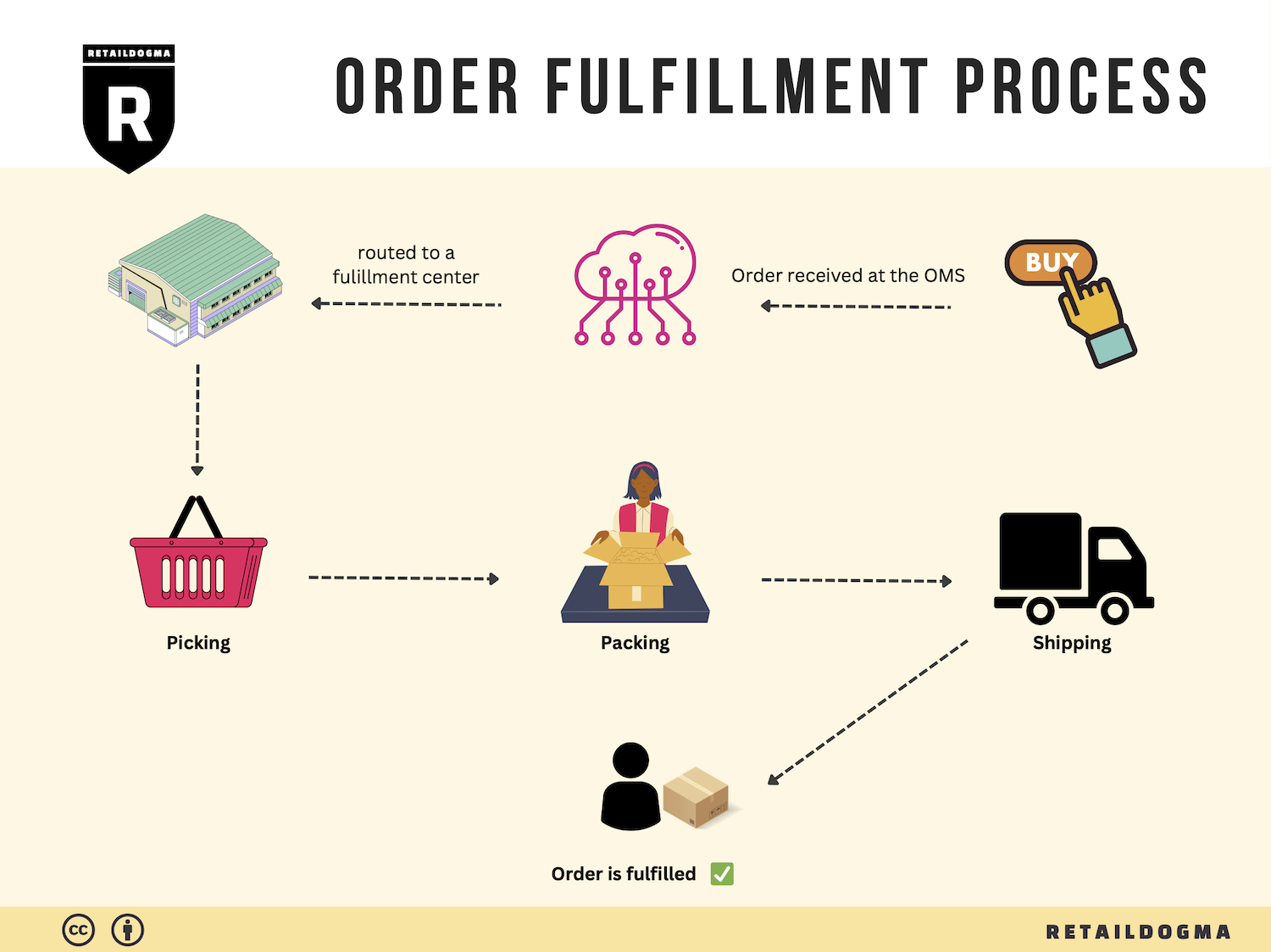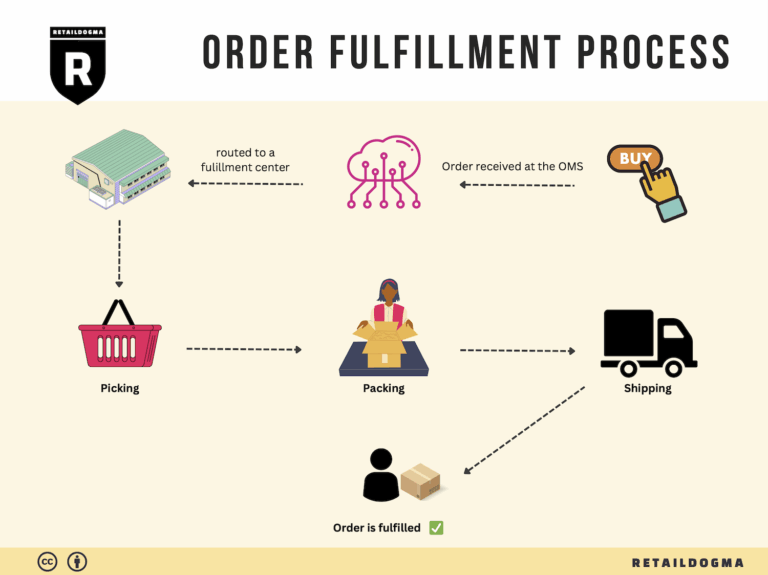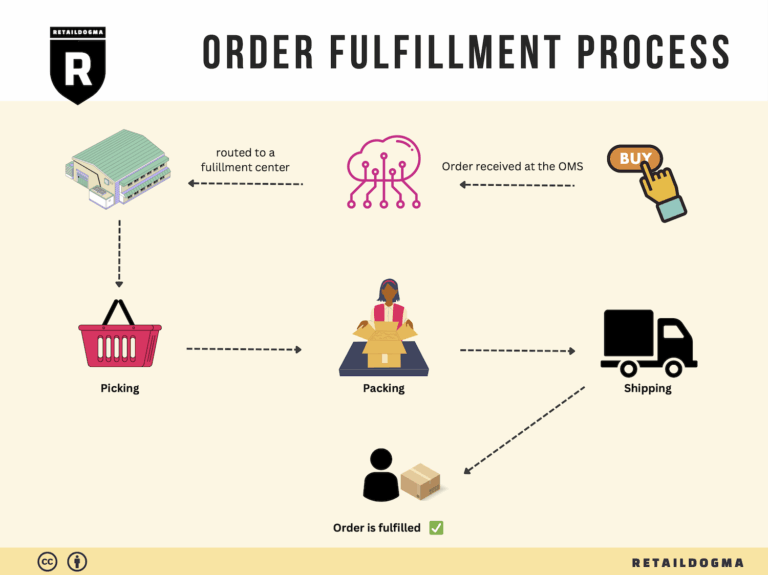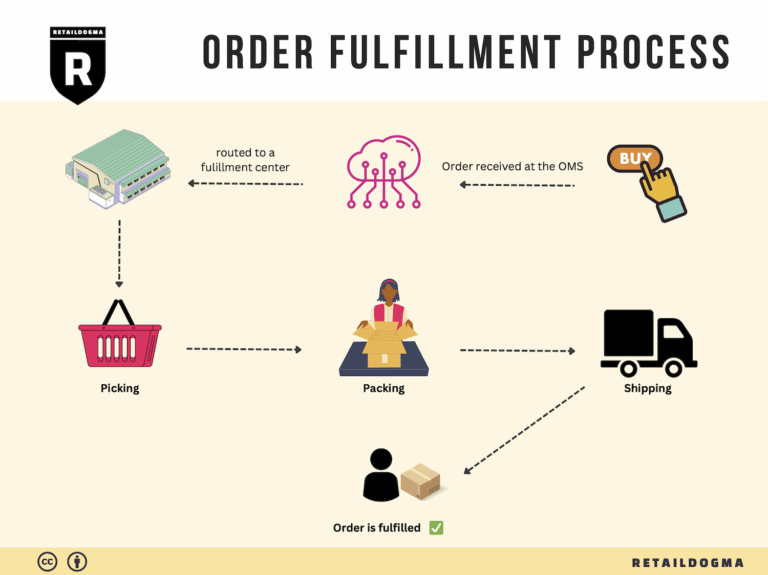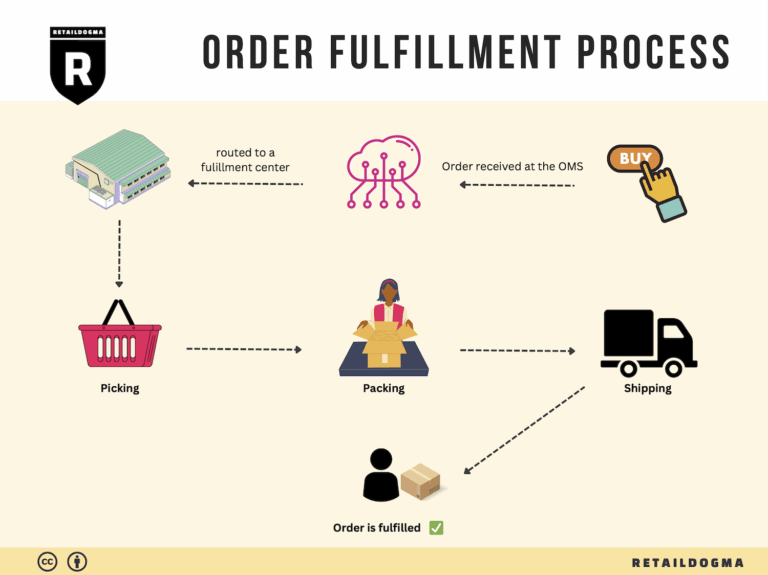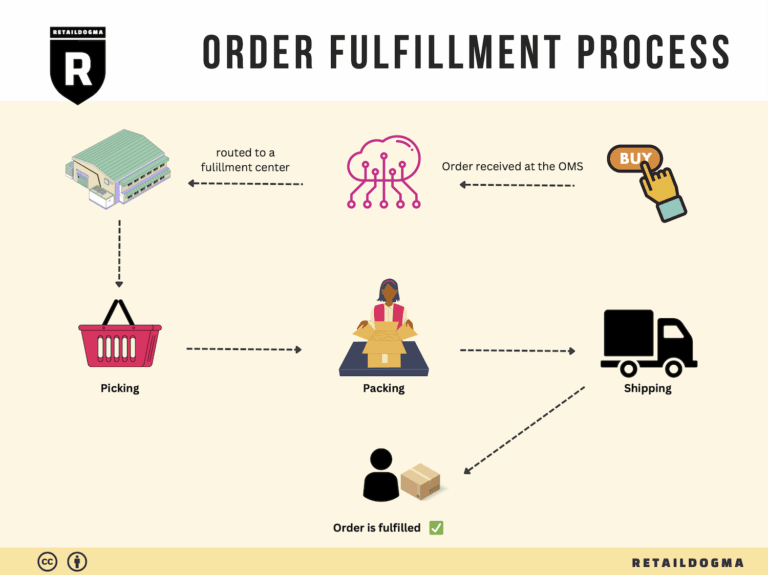What Is A Fulfillment Center? A Complete Guide (2025)
What is E-commerce Fulfillment? An Introduction for Growing Businesses
Understanding E-commerce Fulfillment
For many growing online businesses, the logistics of packing and shipping orders can quickly become overwhelming. As sales increase, the complexities of order management, inventory control, and timely delivery can divert attention from core business functions like marketing and customer engagement. This is where e-commerce fulfillment comes into play, serving as the backbone of your operations. Simply put, fulfillment is the entire process of getting a product from your inventory to your customer’s doorstep.
This guide is designed to demystify e-commerce fulfillment and provide you with the knowledge needed to streamline your logistics. We will explore various fulfillment models, including Third-Party Logistics (3PL) and Fulfillment by Amazon (FBA), to help you understand the options available for your business. Each model has its own strengths and weaknesses, and choosing the right one can significantly impact your operational efficiency and customer satisfaction.
In addition to fulfillment models, we will delve into the core services that fulfillment partners typically offer. These include inventory management, order processing, packing, shipping, and returns handling. Understanding these services will enable you to assess potential partners more effectively and ensure they align with your business needs.
Choosing the right fulfillment partner is crucial for your business’s growth. We will outline key factors to consider, such as location, technology integration, scalability, and customer service. A well-chosen partner can enhance your operational capabilities, improve order accuracy, and ultimately elevate your customer experience.
Pricing is another critical aspect we will cover. Fulfillment costs can vary widely depending on the services provided, storage needs, and shipping options. We will guide you through the different pricing structures and help you identify the most cost-effective solutions for your business.
The ultimate goal of this guide is to empower you to make informed decisions about your logistics strategy. By understanding the fundamentals of e-commerce fulfillment, you can position your business for sustainable growth while ensuring that customer satisfaction remains a top priority. With the right knowledge and tools, you can transform your fulfillment process from a pain point into a competitive advantage.
What You’ll Learn In This Guide
- What is E-commerce Fulfillment? An Introduction for Growing Businesses
- The Order Fulfillment Process: From ‘Buy’ Button to Customer’s Door
- Comparing Fulfillment Models: In-House vs. 3PL vs. Dropshipping
- A Deep Dive into Amazon FBA: Pros, Cons, and Who It’s For
- Core Services Offered by Fulfillment Centers
- How to Choose a Fulfillment Partner: A 6-Point Checklist
- Understanding Fulfillment Pricing: A Breakdown of Common Fees
- Frequently Asked Questions (FAQs) about Fulfillment
- Conclusion: Is Outsourcing Fulfillment the Right Move for Your Business?
- Important Disclaimer
The Order Fulfillment Process: From ‘Buy’ Button to Customer’s Door
1. Receiving Inventory
The first step in the order fulfillment process is receiving inventory at the fulfillment center. This involves the acceptance of products from suppliers or manufacturers. Upon arrival, each item undergoes thorough inspections to ensure quality and compliance with industry standards. This step is crucial because it sets the foundation for the entire fulfillment process. Any discrepancies or damages noted at this stage can lead to errors further down the line, impacting customer satisfaction.
During receiving, items are scanned and assigned a unique identifier known as a Stock Keeping Unit (SKU). This key term is vital as it allows for precise tracking of inventory throughout the fulfillment process. Efficient receiving practices help maintain high order accuracy—KSP Fulfillment reports a 99.8% accuracy rate, which is essential for building customer trust and loyalty.
2. Warehouse Storage
Once inventory is received and inspected, the next step is warehouse storage. Products are organized and stored in a manner that optimizes space and accessibility. This process often employs a strategy known as velocity-based slotting, which categorizes items based on their sales velocity—fast-moving items are placed in easily accessible locations, while slower-moving products are stored further away.
Effective storage is important for operational efficiency. By strategically positioning products, fulfillment centers can reduce the time it takes to locate items during order picking. This directly impacts the speed of order fulfillment and contributes to enhanced customer experiences. Furthermore, specialized storage solutions accommodate various product types, including fragile items or those requiring specific handling, ensuring that all inventory remains in optimal condition.
3. Order Picking
The order picking phase begins once a customer places an order. This step involves retrieving the items from storage based on the order details. A key tool in this phase is the pick list, which outlines the items to be gathered, including their SKUs and storage locations. By utilizing mobile scanning technology, fulfillment team members can efficiently locate and collect the required items.
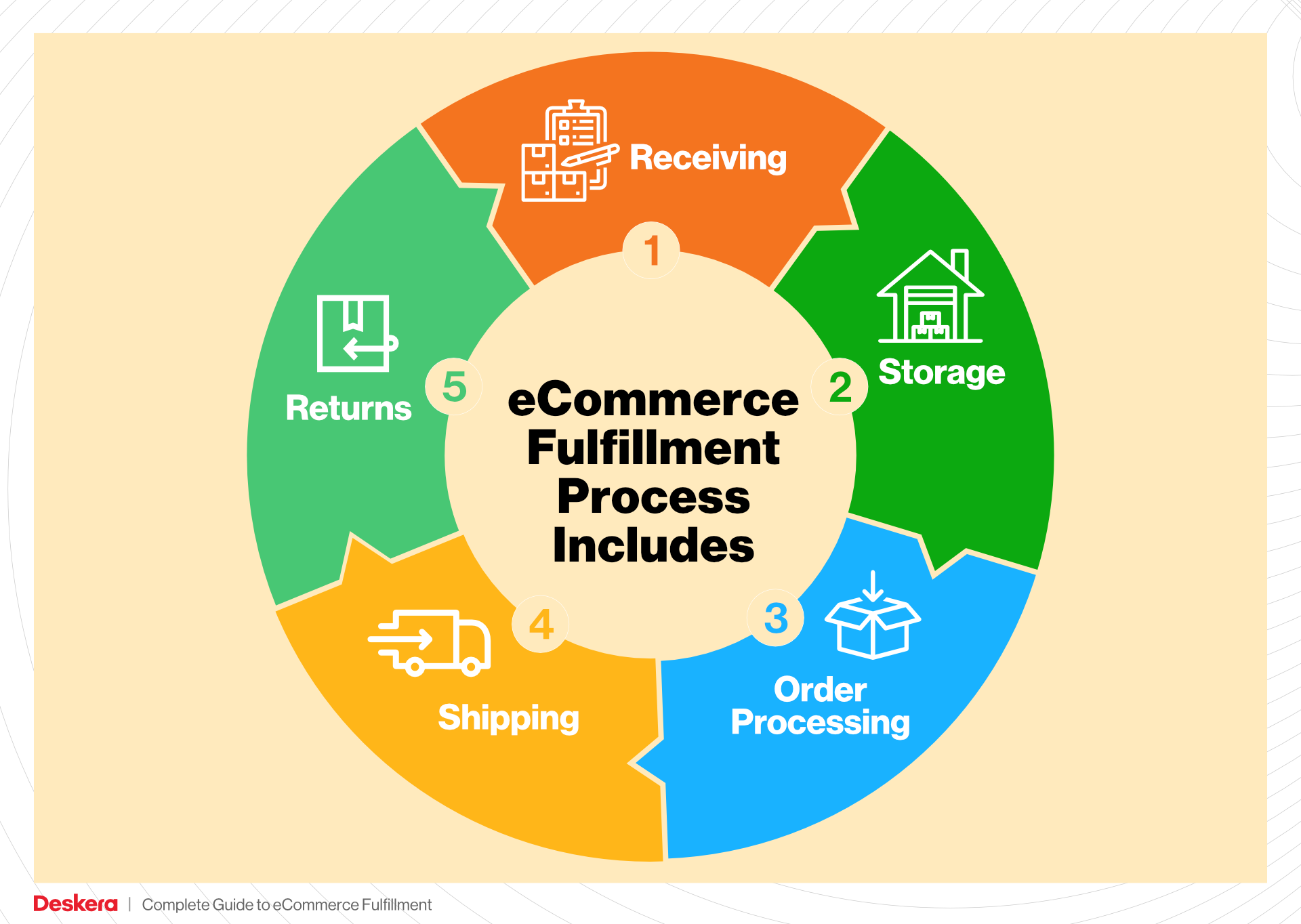
Order picking is a critical step because it directly affects order accuracy and fulfillment speed. Errors during picking can lead to incorrect shipments, resulting in increased returns and customer dissatisfaction. Advanced systems, such as KSP’s precision picking processes, ensure that multiple verification checkpoints are in place, significantly enhancing the accuracy of order fulfillment.
4. Order Packing
After items are picked, they proceed to the order packing stage. Here, products are carefully packed into boxes or envelopes, ensuring that they are protected during transit. This step is crucial for maintaining product integrity and enhancing the unboxing experience for customers. Specialized packaging materials may be used for fragile or high-value items to prevent damage.
Packing is also the stage where shipping labels are generated, and any promotional materials or return instructions can be included. The importance of this step lies in its impact on customer perception; well-packed items contribute to a positive brand experience and encourage repeat purchases. Additionally, efficient packing processes can reduce shipping costs and improve delivery times.
5. Shipping & Delivery
The final step in the order fulfillment process is shipping and delivery. Once packed, orders are handed over to carriers for transportation to the customer’s door. This phase is crucial as it directly influences customer satisfaction—timely and reliable delivery can significantly enhance a brand’s reputation.
During shipping, fulfillment centers must optimize carrier selection based on factors like cost, delivery speed, and destination. This may involve utilizing multiple carriers to ensure that orders are shipped efficiently and economically. Real-time tracking capabilities allow customers to monitor their orders, which is increasingly expected in today’s e-commerce landscape.
In summary, the order fulfillment process is a complex but essential component of e-commerce operations. By mastering each step—from receiving inventory to ensuring timely delivery—businesses can scale effectively while meeting and exceeding customer expectations.
Comparing Fulfillment Models: In-House vs. 3PL vs. Dropshipping
Fulfillment Model Comparison
| Model | Who Handles Inventory | Best For (Business Stage) | Key Advantage | Key Disadvantage |
|---|---|---|---|---|
| In-House Fulfillment | Business itself | Startups to established brands | Complete control over operations | High overhead costs and resource allocation |
| Third-Party Logistics (3PL) | 3PL provider | Scaling businesses | Scalability and expertise in logistics | Potential loss of control over the fulfillment process |
| Dropshipping | Supplier | Early-stage or niche businesses | Low upfront investment and risk | Lower profit margins and dependency on suppliers |
In-House Fulfillment
In-house fulfillment involves managing all aspects of the order fulfillment process within your own business. This model is typically best for startups and established brands that have the resources to invest in warehousing, staffing, and logistics technology. The key advantage of in-house fulfillment is the complete control it offers over operations, inventory management, and customer service. Businesses can tailor their processes to meet their specific needs, ensuring that every aspect, from order picking to packaging, aligns with their brand standards and customer expectations. However, this model comes with significant overhead costs, including warehousing expenses, staffing, and technology investments. As a business scales, these costs can become burdensome, and the complexity of managing logistics can divert focus from core activities such as marketing and product development.
Third-Party Logistics (3PL)
Third-party logistics (3PL) providers offer a comprehensive solution for businesses looking to streamline their fulfillment processes. By outsourcing logistics to a specialized provider, businesses can benefit from the expertise, technology, and scalability that 3PLs offer. This model is particularly advantageous for scaling businesses that need to manage increasing order volumes without the burden of expanding their own operations. Key advantages include access to advanced logistics technology, professional warehousing facilities, and the ability to quickly adjust to market demands without significant capital investment. However, one of the key disadvantages is the potential loss of control over the fulfillment process. Businesses must rely on their 3PL partner to maintain quality and efficiency, which can lead to challenges if the partnership does not meet expectations. It’s crucial for businesses to choose a reputable 3PL provider that aligns with their operational goals and customer service standards.
Dropshipping
Dropshipping is a fulfillment model where retailers sell products without holding inventory. Instead, when a retailer receives an order, they purchase the item from a third-party supplier who ships it directly to the customer. This model is particularly suitable for early-stage or niche businesses that may not have the capital to invest in inventory or warehousing. The primary advantage of dropshipping is the low upfront investment and reduced financial risk, as businesses only pay for products after they have been sold. However, dropshipping also comes with notable drawbacks, including lower profit margins due to reliance on suppliers for pricing and fulfillment. Additionally, businesses may face challenges with inventory availability and shipping times, which can affect customer satisfaction. The dependency on suppliers means that any delays or issues on their end can directly impact the retailer’s reputation and customer experience. Thus, while dropshipping offers a low-barrier entry into e-commerce, it requires careful management of supplier relationships and customer expectations.
Conclusion
In summary, each fulfillment model presents unique advantages and challenges. In-house fulfillment offers control but can be costly; 3PL provides expertise and scalability but may lead to a loss of control; dropshipping lowers financial risk but can compromise profit margins and customer satisfaction. Understanding the specific needs of your business, your growth stage, and your customer expectations will guide you in selecting the most appropriate fulfillment model to support your operational goals and drive success in the competitive e-commerce landscape.
A Deep Dive into Amazon FBA: Pros, Cons, and Who It’s For
Understanding Fulfillment by Amazon (FBA)
Fulfillment by Amazon (FBA) is a service offered by Amazon that allows sellers to store their products in Amazon’s fulfillment centers. Amazon takes care of storage, packaging, and shipping of products on behalf of the sellers, along with providing customer service and handling returns. This service simplifies the logistics of selling on Amazon, making it an attractive option for many e-commerce businesses.
When a customer orders a product through Amazon, the order is processed through Amazon’s systems. The product is picked from the seller’s inventory stored at one of Amazon’s warehouses, packed, and shipped directly to the customer. Sellers benefit from Amazon’s extensive logistics network and customer service resources, allowing them to focus more on growing their business rather than managing fulfillment.
How FBA Works
-
Setting Up an FBA Account: Sellers first need to create an Amazon seller account and enroll in FBA. This process includes configuring shipping settings and selecting which products to fulfill through FBA.
-
Shipping Inventory: Once enrolled, sellers prepare their products for shipment to Amazon’s fulfillment centers. Amazon provides specific guidelines on packaging and labeling to ensure seamless processing upon arrival.
-
Storage and Inventory Management: Products are stored in Amazon’s fulfillment centers, where they are managed through Amazon’s inventory system. Sellers can monitor their inventory levels in real-time through their seller dashboard.
-
Order Processing: When a customer places an order, Amazon picks the product from the seller’s inventory, packs it, and ships it directly to the customer. The shipping speed is often enhanced due to Amazon’s logistics capabilities.

-
Customer Service and Returns: Amazon handles all customer service inquiries related to FBA orders, including return management. This service not only saves time for sellers but also enhances the customer experience.
Pros of Using FBA
Prime Eligibility
One of the most significant advantages of using FBA is that products become eligible for Amazon Prime. This means that Prime members can benefit from free two-day shipping, which can significantly increase sales and visibility on the platform. Many consumers prefer to shop for Prime-eligible products, leading to higher conversion rates.
Customer Trust
Amazon is a trusted brand with a reputation for customer service and fast shipping. When sellers use FBA, their products are associated with Amazon’s brand, enhancing customer trust. Buyers are more likely to purchase items that are fulfilled by Amazon, knowing that they can rely on Amazon’s customer service and return policies.
Multi-Channel Fulfillment
FBA isn’t limited to Amazon sales alone. Sellers can also use FBA to fulfill orders from other sales channels, such as their own websites or other marketplaces. This flexibility allows businesses to manage a single inventory across multiple platforms, simplifying logistics and order management.
Cons of Using FBA
High Fees
While FBA offers many advantages, it also comes with costs. Sellers must pay various fees, including storage fees for keeping inventory in Amazon’s fulfillment centers and fulfillment fees per unit sold. These costs can add up, particularly for sellers with low-margin products, impacting overall profitability.
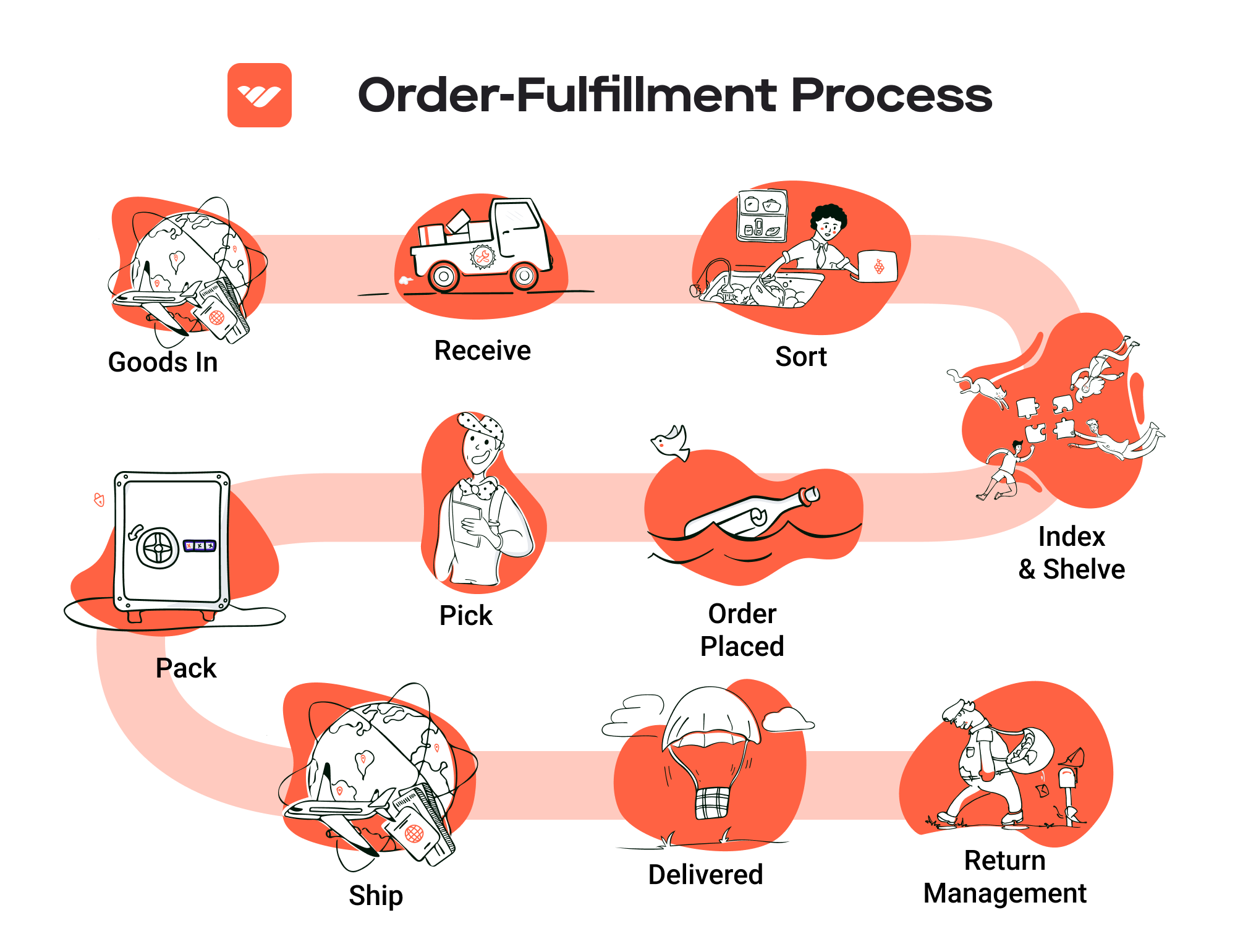
Strict Inventory Rules
Amazon has stringent policies regarding inventory management. Sellers must adhere to strict guidelines for product dimensions, weight, and packaging. Non-compliance can result in additional fees or even having inventory returned to the seller. This rigidity can be challenging for businesses that require more flexibility in their inventory management.
Commingling Risks
When using FBA, sellers’ products may be commingled with those of other sellers. This means that when an order is fulfilled, the customer may receive a product from another seller with the same SKU. While this can streamline operations, it also poses risks—if a customer receives a defective product, they may associate that negative experience with the original seller, potentially harming their brand reputation.
Who is FBA Best For?
FBA is best suited for e-commerce businesses that want to leverage Amazon’s extensive logistics network and customer trust without managing the complexities of fulfillment themselves. It is particularly advantageous for:
-
New Sellers: Businesses just starting out can benefit from Amazon’s established infrastructure and customer base, allowing them to focus on marketing and product development.
-
High-Volume Sellers: Sellers with a significant volume of sales can take advantage of Amazon’s efficiency in handling large orders and shipping logistics.
-
Brands Seeking Brand Exposure: Brands looking to enhance their visibility and reputation can leverage Amazon’s credibility and reach to attract new customers.
-
Multi-Channel Sellers: Businesses selling across multiple platforms can streamline their operations by centralizing fulfillment through FBA, thus managing inventory more effectively.
In conclusion, Fulfillment by Amazon offers a powerful solution for e-commerce businesses looking to scale their operations. While it provides numerous advantages, including Prime eligibility, customer trust, and multi-channel fulfillment, it is essential to weigh these benefits against the potential downsides, such as high fees and strict inventory policies. By understanding both the pros and cons, sellers can make informed decisions about whether FBA aligns with their business goals and operational needs.
Core Services Offered by Fulfillment Centers
Inventory Management & Warehousing
Effective inventory management and warehousing are fundamental to the success of any e-commerce business. Fulfillment centers provide specialized storage solutions that ensure products are stored efficiently, securely, and are easily accessible for order fulfillment. This service includes advanced Warehouse Management Systems (WMS) that track inventory levels, monitor stock movements, and predict future inventory needs based on sales trends.
Benefits:
-
Real-Time Visibility: With sophisticated inventory tracking, businesses gain real-time insights into stock levels across multiple sales channels. This ensures that e-commerce owners can make informed decisions regarding reordering and inventory allocation, minimizing the risk of stockouts or overstock situations.
-
Cost Efficiency: Centralized warehousing reduces the cost of holding inventory. By optimizing storage space and improving turnover rates, businesses can lower their operational costs while maximizing the use of their resources.
-
Scalability: As e-commerce businesses grow, their inventory needs change. Fulfillment centers offer scalable solutions that can adapt to seasonal fluctuations or rapid growth, ensuring that businesses are equipped to handle increased demand without sacrificing service quality.
Pick and Pack Services
Pick and pack services involve the process of selecting ordered products from inventory (picking) and preparing them for shipment (packing). Fulfillment centers employ advanced technology and systematic processes to ensure that each order is accurately fulfilled and packaged appropriately for delivery.
Benefits:
-
Order Accuracy: With precision picking systems and multiple verification checkpoints, fulfillment centers significantly reduce the likelihood of errors. This leads to a 99.8% order accuracy rate, which is critical for maintaining customer satisfaction and brand reputation.
-
Speed: Efficient pick and pack processes enable faster turnaround times for orders, often shipping within 2-3 days. This meets the growing consumer demand for quick delivery, enhancing customer experiences and increasing the likelihood of repeat purchases.
-
Custom Packaging: Fulfillment centers often provide specialized packing options that enhance the unboxing experience for customers. Whether it’s using branded materials or ensuring fragile items are securely packaged, a focus on presentation can elevate a brand’s image and perceived value.
Kitting and Assembly
Kitting and assembly services involve the grouping of multiple products into a single package or kit, often requiring some level of assembly before shipping. This service is particularly beneficial for businesses that sell complex products or bundles that require specific configurations.
Benefits:
-
Enhanced Customer Offerings: By allowing businesses to offer bundled products or customized kits, fulfillment centers enable e-commerce brands to create unique value propositions. This can lead to increased average order values and improved customer satisfaction.
-
Streamlined Operations: Outsourcing kitting and assembly reduces the burden on internal resources. Fulfillment centers can handle these processes efficiently, allowing businesses to focus on core activities like marketing and product development.
-
Flexibility: Kitting services can be adjusted based on market trends and customer preferences. This flexibility allows businesses to quickly adapt their product offerings without the need for significant investment in labor or infrastructure.
Returns Management (Reverse Logistics)
Returns management, or reverse logistics, is a critical service provided by fulfillment centers that streamlines the process of handling returned products. This service includes the assessment, restocking, and processing of returns, ensuring that businesses can efficiently manage this often-complex aspect of e-commerce operations.
Benefits:
-
Improved Customer Satisfaction: A seamless returns process enhances the overall customer experience. Fulfillment centers can manage returns quickly and efficiently, ensuring that customers receive prompt refunds or exchanges, thereby fostering loyalty and repeat business.
-
Cost Reduction: Effective returns management minimizes the costs associated with handling returns. By optimizing the reverse logistics process, fulfillment centers can reduce the time and resources spent on restocking, repackaging, and reselling returned items.
-
Data Insights: Returns management provides valuable data on customer behavior and product performance. Analyzing return trends allows businesses to identify issues with products or customer expectations, enabling them to make informed decisions to improve product offerings and reduce return rates.
In conclusion, partnering with a fulfillment center for these core services can significantly enhance an e-commerce business’s operational efficiency, customer satisfaction, and overall growth potential. By leveraging the expertise and technology of fulfillment centers, businesses can scale effectively while maintaining a high level of service quality.
How to Choose a Fulfillment Partner: A 6-Point Checklist
Location & Warehouse Network
Importance: The geographical location of your fulfillment partner’s warehouses can significantly impact shipping costs, delivery times, and overall customer satisfaction. A strategically located warehouse can ensure faster delivery to your target markets, which is critical in today’s e-commerce environment where consumers expect quick shipping.
Questions to Ask:
– Where are your warehouses located, and how does that align with my customer base?
– What is your average shipping time to major markets?
– Do you have multiple locations to facilitate regional shipping and reduce costs?
– How do you handle shipping for international orders?
Technology & Integrations
Importance: The technology that your fulfillment partner employs can streamline operations, enhance accuracy, and improve inventory management. A partner with robust technology can provide real-time tracking, order management, and analytics, which are essential for making informed business decisions.
Questions to Ask:
– What warehouse management system (WMS) do you use, and how does it integrate with my existing e-commerce platforms?
– Can your system handle multi-channel sales? If so, how does it synchronize inventory across different platforms?
– Do you offer real-time inventory visibility and reporting?
– How do you ensure data security and compliance with customer information?
Specializations (e.g., cold storage, oversized items)
Importance: Different products have varying storage and handling requirements. If your business involves special items, such as perishable goods, oversized products, or fragile items, you need a partner that specializes in those areas to maintain quality and compliance.
Questions to Ask:
– What types of products do you specialize in fulfilling?
– Do you have facilities for temperature-controlled storage, or can you handle oversized items?
– What specific handling procedures do you have for fragile or high-value items?
– Can you accommodate seasonal variations in product types and volumes?
Scalability & Capacity
Importance: As your business grows, your fulfillment partner must be able to scale operations accordingly. A partner with flexible capacity can adapt to fluctuations in order volume, ensuring that you can meet customer demand without compromising service quality.
Questions to Ask:
– How do you manage capacity during peak seasons or promotional events?
– What is your process for scaling operations to accommodate growth?
– Can you provide examples of how you’ve handled rapid growth for other clients?
– What contingency plans do you have in place for unexpected surges in demand?
Pricing and Contracts
Importance: Understanding the pricing structure and contract terms is crucial for budgeting and financial planning. A transparent pricing model can help you avoid unexpected costs, while flexible contracts can allow for adjustments as your business needs change.
Questions to Ask:
– What pricing models do you offer (e.g., per order, per item, monthly fees)?
– Are there any additional fees I should be aware of (e.g., storage, pick and pack, shipping)?
– How do you handle contract renewals and termination?
– Can you provide a clear breakdown of all costs associated with your services?
Customer Support & Reviews
Importance: Excellent customer support is essential for resolving issues quickly and maintaining a smooth operational flow. Additionally, researching reviews and testimonials can provide insights into the partner’s reliability and customer service quality.
Questions to Ask:
– What kind of customer support do you offer (e.g., dedicated account manager, 24/7 support)?
– How do you handle issues related to order fulfillment errors or shipping delays?
– Can you provide references or case studies from other clients in my industry?
– What is your process for gathering and acting on customer feedback?
In conclusion, selecting the right fulfillment partner is a critical decision that can significantly impact your e-commerce operations. By using this checklist, you can ensure that you choose a partner who not only meets your current needs but can also support your growth in the future. Take the time to ask the right questions and thoroughly evaluate potential partners to find the one that aligns best with your business goals and customer expectations.
Understanding Fulfillment Pricing: A Breakdown of Common Fees
Initial Setup Fees
Initial setup fees are often incurred when you first engage with a fulfillment provider. These fees cover the costs associated with onboarding your business, which may include setting up your inventory in their Warehouse Management System (WMS), creating custom packaging options, and integrating your selling platforms with their systems. The calculation of these fees can vary significantly between providers, but they typically range from a few hundred to several thousand dollars, depending on the complexity of your operations and the level of customization required.
To minimize initial setup costs, it’s advisable to clarify with your provider what specific services are included in the setup fee and if any additional charges may apply based on your unique needs.
Receiving Fees
Receiving fees are charged for the process of accepting and inspecting your inventory upon arrival at the fulfillment center. This fee covers labor costs associated with unloading, checking for damages, and entering items into the WMS. Providers may charge receiving fees on a per-unit basis or a flat fee per shipment. For example, if you send a pallet of goods, the provider might charge a fee based on the number of items received or a flat rate for the entire pallet.
To manage these costs, consider consolidating shipments to minimize the frequency of deliveries, as some providers may offer reduced rates for bulk receiving.
Storage Fees (per pallet/bin)
Storage fees are incurred for the space your inventory occupies in the fulfillment center. These fees are typically calculated on a monthly basis and can be charged per pallet or per bin, depending on how the provider structures their storage capabilities. For instance, a pallet may be charged at a flat rate per month, while smaller items might be charged based on the number of bins they occupy.
Storage fees can fluctuate based on demand and seasonality. To optimize storage costs, maintain a lean inventory strategy by analyzing sales patterns and adjusting stock levels accordingly. Additionally, inquire if your provider has seasonal pricing adjustments, as some may offer lower rates during off-peak times.
Pick & Pack Fees (per item/order)
Pick and pack fees are charged for the process of selecting items from inventory and preparing them for shipment. This fee is often calculated on a per-item or per-order basis, meaning that the more items you have in an order, the higher the fee. For example, a fulfillment center might charge $1.50 per item picked and packed, or a flat fee of $5 for a single order regardless of the number of items.
To reduce pick and pack fees, consider optimizing your product offerings. Fewer, more popular items may lead to higher order volumes with lower complexity, ultimately reducing costs. Additionally, discussing bulk order discounts or a tiered pricing structure with your fulfillment provider can lead to cost savings.
Shipping Fees
Shipping fees are typically the most variable component of fulfillment pricing, as they depend on factors such as the destination, shipping method, package dimensions, and weight. Fulfillment providers often partner with multiple carriers to offer competitive rates, and shipping fees can either be charged at a flat rate or based on actual carrier costs.
To manage shipping costs effectively, analyze your shipping volume and patterns. This data can help negotiate better rates with your fulfillment provider or choose a shipping plan that balances cost and delivery speed. Additionally, consider whether your provider can offer access to discounted shipping rates through their partnerships with carriers.
Tips for Getting an Accurate Quote
When seeking an accurate quote for fulfillment services, consider the following steps:
-
Define Your Needs: Clearly outline your business requirements, including the types of products you sell, order volumes, and shipping destinations. This clarity will help providers give you a more accurate estimate.
-
Request Detailed Pricing Structures: Ask for a breakdown of all potential fees, including setup, receiving, storage, pick & pack, and shipping. Understanding the pricing model will help you anticipate costs.
-
Inquire About Volume Discounts: If you anticipate high order volumes, inquire if the provider offers discounts for bulk orders or long-term commitments.
-
Evaluate Additional Services: Consider any extra services you may need, such as returns processing or custom packaging, and ensure these are included in your quote.
-
Compare Multiple Providers: Don’t settle for the first quote you receive. Comparing multiple fulfillment providers can give you a clearer picture of market rates and service offerings.
By being thorough and informed during the quoting process, you can better align your fulfillment strategy with your business goals while managing costs effectively.
Frequently Asked Questions (FAQs) about Fulfillment
1. What is KSP Fulfillment?
KSP Fulfillment is a specialized third-party logistics (3PL) provider focused on e-commerce fulfillment services. It leverages advanced robotics and FDA-registered facilities to efficiently handle the entire logistics process, including storage, inventory management, order picking, packing, and shipping of a diverse range of products.
2. How does KSP Fulfillment ensure order accuracy?
KSP Fulfillment achieves an impressive 99.8% order accuracy through a combination of advanced robotics, multiple verification checkpoints during the picking process, and Statistical Process Controls. These systems work together to minimize errors and ensure that customers receive the correct products in a timely manner.
3. What is the difference between a warehouse and a fulfillment center?
A warehouse is primarily focused on storage, whereas a fulfillment center is designed to handle the entire order fulfillment process. Fulfillment centers manage inventory, process orders, pack products, and ship them directly to customers, providing a more comprehensive service that is essential for e-commerce businesses.
4. What is a 3PL?
A third-party logistics (3PL) provider is a company that offers outsourced logistics services, including warehousing, transportation, and fulfillment. Partnering with a 3PL like KSP Fulfillment allows businesses to streamline their supply chain operations, reduce overhead costs, and focus on core competencies like marketing and product development.
5. How much do fulfillment services cost?
Fulfillment costs vary based on several factors, including order volume, storage needs, packaging requirements, and shipping destinations. KSP Fulfillment offers customized pricing structures to accommodate businesses of all sizes, ensuring that you only pay for the services you use.
6. What types of products can KSP Fulfillment handle?
KSP Fulfillment specializes in a wide range of products, including apparel, electronics, home goods, health and beauty items, and consumer goods. Their facilities are designed to manage diverse product sizes and packaging requirements, ensuring optimal handling and presentation for each order.
7. How does KSP Fulfillment manage seasonal demand fluctuations?
KSP Fulfillment employs flexible capacity handling and advanced inventory management systems that allow for quick adjustments to accommodate seasonal peaks. This scalability ensures that your operations can handle increased order volumes without compromising service quality.
8. What technology does KSP Fulfillment use to enhance operations?
KSP Fulfillment utilizes advanced warehouse management systems (WMS), mobile scanning technology, and robotics to streamline operations. These technologies enable real-time inventory tracking, efficient order processing, and precise picking, contributing to enhanced efficiency and accuracy.
9. How does KSP Fulfillment support multi-channel selling?
KSP Fulfillment integrates with over 100 selling platforms, enabling seamless omnichannel operations. This integration allows businesses to synchronize inventory across various sales channels, manage orders from a single dashboard, and provide a unified customer experience regardless of where the order is placed.
10. What are the benefits of partnering with KSP Fulfillment?
By partnering with KSP Fulfillment, businesses can benefit from increased order accuracy, faster shipping times, reduced customer service inquiries, and a scalable infrastructure that grows with your business. Additionally, KSP’s focus on advanced technology and quality customer care helps enhance the overall customer experience, driving repeat purchases and brand loyalty.
Conclusion: Is Outsourcing Fulfillment the Right Move for Your Business?
The Benefits of Outsourcing Fulfillment
Outsourcing fulfillment can be a game-changer for e-commerce businesses seeking to optimize operations and scale effectively. By partnering with a specialized fulfillment service, companies can save valuable time that would otherwise be spent managing logistics. This allows business owners and operations managers to focus on core activities such as product development, marketing, and customer engagement.
Moreover, fulfillment services offer scalability that is crucial for growing businesses. As order volumes fluctuate, a capable partner can adjust operations to accommodate increased demand without compromising service quality. This agility not only enhances customer satisfaction but also positions your brand to seize market opportunities as they arise.
Additionally, fulfillment partners bring a wealth of expertise to the table. They understand the complexities of logistics and inventory management, which can be especially challenging for businesses operating across multiple sales channels. With advanced technology and industry best practices, these partners ensure precision in order processing and compliance with regulatory standards, further reducing the risk of costly errors.
Choosing the Right Partner for Growth
Selecting the right fulfillment partner is vital for your business’s growth trajectory. Look for a provider that aligns with your operational needs and customer expectations, as well as one that can adapt to your evolving requirements. A well-chosen partner not only enhances efficiency but also strengthens your brand’s reputation through exceptional service delivery.
Call to Action
Now is the time to assess whether outsourcing fulfillment is the right next step for your business. Conduct a thorough audit of your current shipping and logistics processes. Consider the time and resources you’re dedicating to fulfillment and evaluate how a specialized partner could streamline your operations. By making informed decisions today, you set the stage for sustainable growth and success in the competitive e-commerce landscape.
Important Disclaimer
⚠️ Important Disclaimer
The information in this guide is for educational purposes. Fulfillment services, pricing, and platform features change frequently. Always conduct your own due diligence and consult with providers directly before making business decisions.
